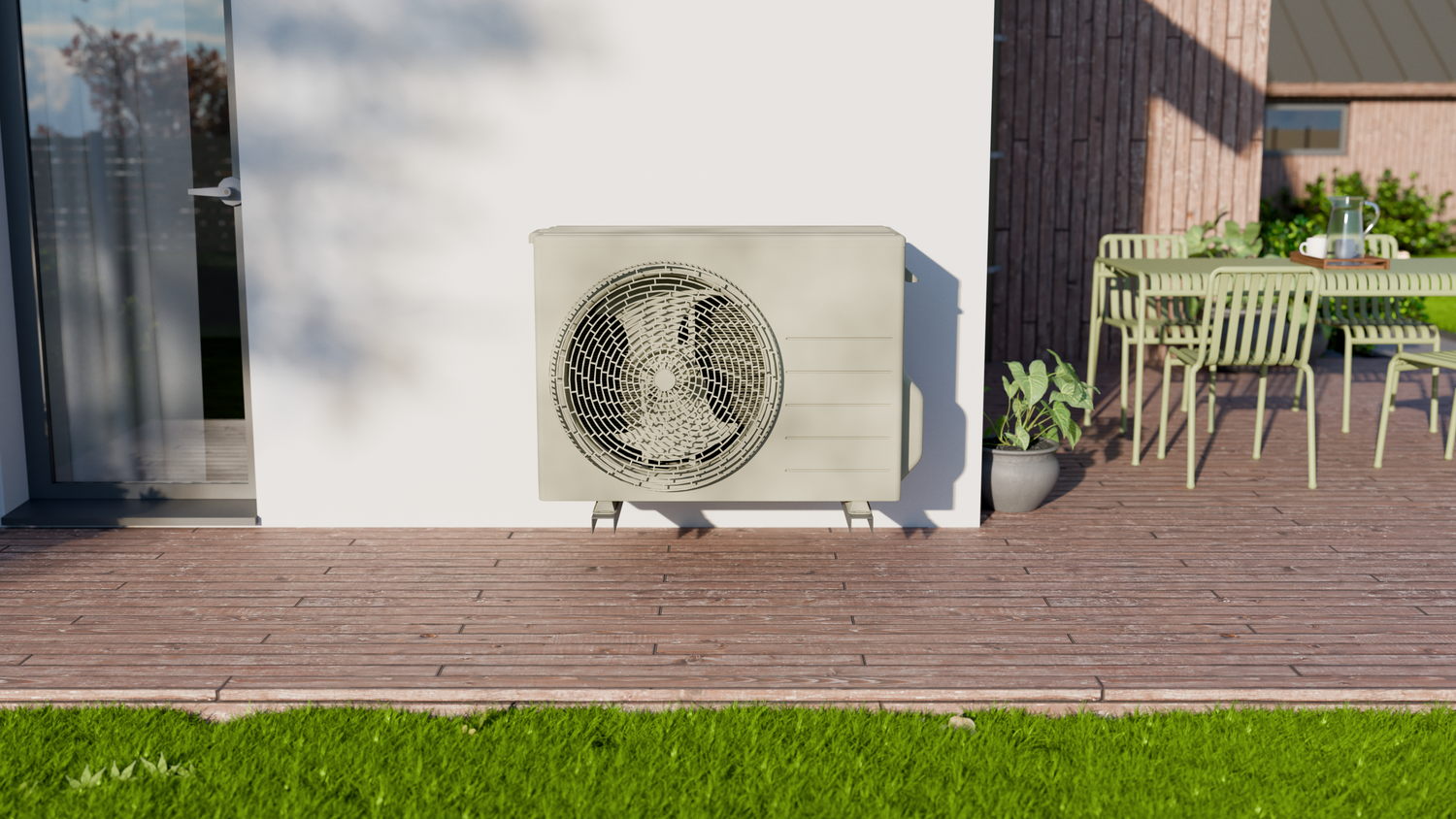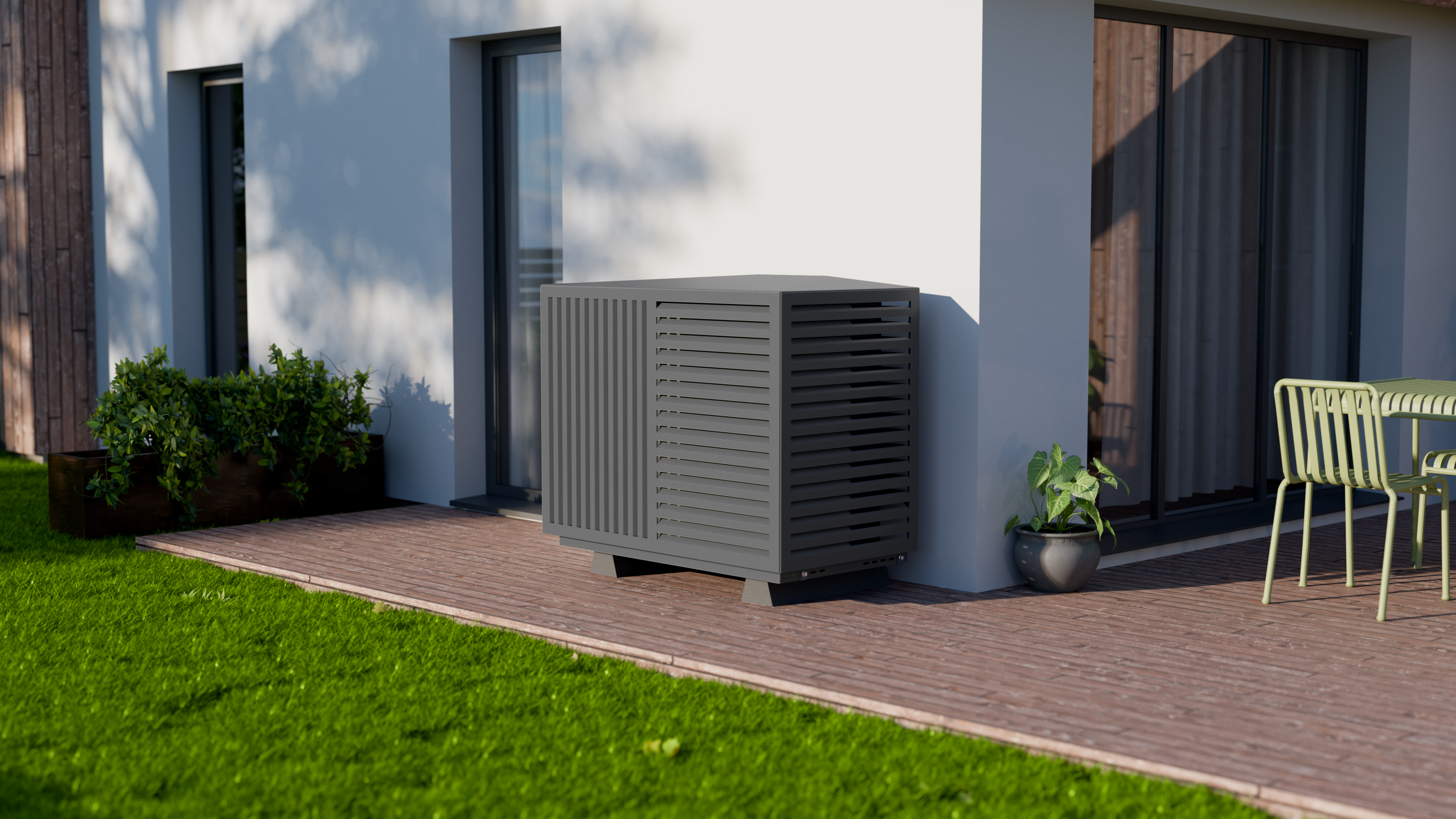Would you like to install a heat pump in your single-family home and thus create the basis for a sustainable, energy-efficient future?
In this article you will find relevant facts about heat pumps – from how they work to their advantages and power consumption.
What types of heat pumps are there?
The different types of heat pumps differ in their heat sources and their area of application. The most important heat pumps for single-family homes include:
- the air-water heat pump [heat source: outside air / heat output: water]
- the air-to-air heat pump [heat source: outside air / heat output: air]
- the brine-water heat pump [heat source: soil via geothermal probes (deep) or geothermal collectors (shallow) / heat output: water]
- the water-water heat pump [heat source: groundwater / heat output: water]
Air-water heat pumps for single-family homes are the most popular type of heat pump today because they are suitable for most new buildings and are easy to install regardless of the soil conditions.
How an air-water heat pump works
The basic principle of an air-water heat pump is similar to that of a refrigerator: a fan actively sucks in the ambient air and passes it on to an evaporator. The coolant circulating in it evaporates through contact with the "warm" outside air and heats up until it begins to evaporate. The resulting steam flows into an electricity-driven compressor. The latter increases the pressure and the temperature. When the steam from the coolant reaches the desired temperature, it goes to the condenser, where it transfers its heat to the heating system and condenses.
The heat gained can be used to heat your rooms or to prepare hot water. The coolant is liquefied again by flowing through a so-called expansion valve. The cycle then starts again.
For which buildings is an air-water heat pump suitable?
Air-water heat pumps are generally a suitable choice for new buildings – because they comply with the standards of the Energy Saving Ordinance (EnEV) and therefore guarantee optimal insulation.
But what about existing buildings?
In this case, suitability depends heavily on the condition of the house. A key factor in the suitability test is adequate insulation: the better the insulation, the more economically the heat pump will work in the single-family home. If the building has no insulation, this would have to be retrofitted. Therefore, be sure to have the situation checked by a specialist before investing in an air-water heat pump!
Good to know: Underfloor heating is not a must for using a heat pump in a single-family home. As long as they are designed for low temperatures, efficient radiators can work just as economically with it.
The advantages of an air-water heat pump in a single-family home
Heat pumps may be more expensive to buy than gas or oil heating systems, but their running costs are much lower. They meet the standards of the EnEV and are the number one "green heating option" for newly built houses: With around 75% energy from the environment and only 25% from electricity, an air-water heat pump for a single-family home impresses with its very low CO2 emissions.
Power consumption of a heat pump for a single-family home
When choosing a heat pump for your single-family home, electricity consumption plays a crucial role – because it requires electricity to extract heat from the environment and make it usable.
The key figure for the power consumption of a heat pump is the so-called annual performance factor (APF): This indicates the ratio between usable heat and electrical energy supplied over a period of 12 months. The higher the annual performance factor, the more efficiently the heat pump works. In order to receive BAFA funding, your heat pump should achieve an APF of at least 3.5. For new buildings, funding is possible from an APF of 4.5.
Tip: Use the practical Use the BWP’s annual performance index calculator to determine this important figure.
Also, do not confuse the JAZ with the “Coefficient of Performance” (CoP). This is often stated by manufacturers on the data sheets of heat pumps and is simply an instantaneous value that indicates how much heat can be generated from one unit of electricity at a certain time under certain test conditions.
Calculating the power consumption of a heat pump
Once you have determined the annual performance index of your heat pump, you can calculate the annual power consumption of the heat pump for your single-family home, taking into account the pump heating output and the annual heating hours:
Power consumption = [heating output / seasonal efficiency] x heating hours
For a typical air-water heat pump in a single-family home, the power consumption could be as follows:
Power consumption = [9 kWh / 3.8] x 2000 operating hours = 4736.84 kWh
Tip: By combining a heat pump, photovoltaic system and electricity storage, you can significantly improve your consumption balance. It is also possible to cover your electricity needs with a cheaper heat pump tariff. However, this would require the installation of a specific electricity meter for the heat pump.
FAQ about heat pumps in single-family homes
Even at frosty temperatures of -10 to -15 degrees, the coolants used in heat pumps for single-family homes boil, enabling reliable heating. Some models can even withstand temperatures of below -20 degrees.
To calculate the heat pump electricity costs for a year, multiply the respective electricity consumption by the current electricity tariff, for example:
Electricity costs per year = ([9 kWh / 3.8] x 2000 operating hours) x 0.42 € = 1,989 €
In addition to the annual performance factor, the following factors influence the power consumption of a heat pump:
- Insulation standard of the building
- heated area
- Heating system (radiators or underfloor heating)
- regional climate
- Residents’ heating habits
A heat pump represents a considerable investment. Including accessories and installation, the cost of such a system is on average €15,000.
In order to protect the device from theft and vandalism, we recommend purchasing a heat pump enclosure.











Leave a comment
This site is protected by hCaptcha and the hCaptcha Privacy Policy and Terms of Service apply.